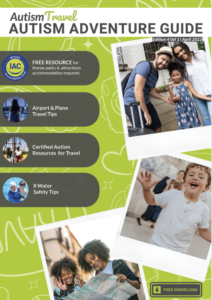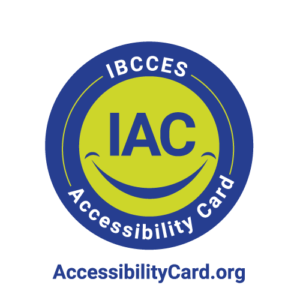By Dr. Chris O’Shea

Just over a year ago Sebastian had his first introduction to scuba diving at Beaches Ocho Rios. Sebastian has wanted to scuba dive since he was about three. His success with the ‘Bubblemaker’ introduction was largely due to the support of the Beaches staff. All of this has been covered in my previous post, so the question for us as parents of a child with Asperger’s was “now what do we do”?
The first problem on returning home was finding a program that was willing to work with us. I suspect this will be the most common issue that parents with children on the Spectrum face regardless of their interests (it has certainly been the issue that we have most commonly experienced in the past). Despite Sebastian having already completed the Bubblemaker course in Jamaica, the local dive shop that we approached simply refused to work with us because of Sebastian’s ‘special needs.’
We finally found a business that was willing to work with us, but they were located over two hours away. We did the Padi elearning option as we knew Sebastian would be unlikely to cope with the in-class potion of the course. He was able to complete his in-pool skills by the spring. To make this work we booked a semi-private course for Sebastian and I. However, there were other students in the pool at the same time, which although a distraction for Sebastian also had some advantages. Sebastian’s behaviour is substantially calmer and more focused once he’s under the water. In fact, the only time I’ve seen Sebastian engaging in ‘normal’ play with other non-Spectrum children was during our in-pool scuba course. There’s ample discussion of how swimming and diving can be therapeutic for kids on the Spectrum and this has certainly been our experience. The hurdle is in convincing business owners and instructors that the distracted and erratic kid they see on the surface can actually succeed underwater.

The next step was to take our in-pool classwork to Jamaica for the open water certification. In May 2018 we returned to Beaches Ocho Rios with the goal of finishing our Open Water courses. (Although I was initially only diving because no one would work with Sebastian unless I was in the water to partner him, I had also become completely hooked on the scuba experience.) Sebastian successfully dove to 33 feet on his first dive. He saw a lionfish and a stingray partially buried in the sand. He was calm and relaxed throughout the dive. After seeing the stingray, he was reluctant to kneel on the sand to complete the Open Water skills demonstration so we ended the dive. Unfortunately, the next morning Sebastian was coming down with a cold. (I spent the next three days completing my OW cert). On our final full day Sebastian was sufficiently recovered that he wanted to dive again. This was fine, as Beaches had paired us up with one of their head instructors, and they were willing to work around Sebastian’s needs. Unfortunately, this final dive proved less than successful. No sooner was Sebastian in the water than he was stung across two fingers by a small jellyfish. This brought our diving to a swift end.

Back in Canada I emailed the dive shop that we were working with and explained both the positive and negative results of our Jamaica trip and asked what the next logical step would be to complete Sebastian’s certification. I received no response. Previously emails had been replied to promptly. I emailed again, ccing the owner, to ask if they had options for Sebastian to complete his Open Water certification. Again, there was no reply. I might have pursued this further at the time but I broke my hand mountain biking in June, so diving was on hold for the summer.
By the end of August (when I could dive again) we switched our focus to Diver’s Den in Tobermory, Ontario (2 hours away in a different direction). Tobermory is famous for its wreck diving, but the water is also cold, so we’d be going from diving in shorts and t-shirt to full 7mm neoprene. I had initially ruled this out as I wasn’t sure how Sebastian would react to the constrictive nature of a full wetsuit. However, I had thoroughly explained our situation to the manager at Diver’s Den that they were willing to work with us. Rather than the full Open Water certification, we were now looking at just completing the lesser Scuba Diver certification before the deadline for his ‘classroom’ and in-pool course work expired. We made it clear that we certainly didn’t expect him to be certified unless he could complete all the requirements. Although it was a two-hour dive, we no longer had any closer options. As a ‘test run’ we took a day trip to Tobermory just to familiarize Sebastian with the new location and to see if he’d even put on a 7mm wetsuit. To my surprise, he put the full suit on without any objections and with no prompting. So, that was unexpected!
This is a crucial point for kids on the spectrum, you never really know how they will react to a new situation
Diver’s Den uses a walking-in area for their starting dives that has four sunken tug boats in 15 to 30 feet of water. I thought this would be ideal. I thought Sebastian would be fascinated by the wrecks and therefore willing to do his certification skills without any problems. I couldn’t have been more wrong. This is a crucial point for kids on the spectrum, you never really know how they will react to a new situation. I’d been wrong about the wetsuit and, unfortunately, I was wrong about his reaction to the wrecks.
“They look like giant skeletons” said Sebastian. His instructor agreed. “Are there any dead people here?” asked Sebastian. His instructor explained that no one had died on the tugs and that it was just a place for beginner divers to see some ship wrecks in a safe and relatively shallow environment. My thought: ‘we’re screwed.’ I knew instantly that Sebastian wasn’t going anywhere near the wrecks. His instructor worked patiently with him for about an hour, Sebastian happily dived along the rocky shoreline at 3 to 5 feet of water, but it was clear he wasn’t going deeper. A second attempt produced the same result. Sebastian simply couldn’t bring himself to go near the wrecks. Which meant that he couldn’t get deep enough to complete the required skill demonstrations for certification. (At this point, I should emphasize that the instructor at Diver’s Den and all of the staff who we interacted with were great.)
Recently, Sebastian has finally started talking about diving again. He’ll have to redo the course work and in-pool classes (which means paying for them again unfortunately). But, having digested his experiences to this point we can only hope that he’ll be more successful with this attempt.
Often the road block isn’t the children, it’s finding programs, instructors, and businesses that are willing to adapt their ‘normal’ operations to accommodate and meet the needs for special needs children.
As parents of kids on the spectrum, the bottom line is that when they want to engage in activities that will expand their horizons you have to take these opportunities to support them if it’s at all possible. Often the road block isn’t the children, it’s finding programs, instructors, and businesses that are willing to adapt their ‘normal’ operations to accommodate and meet the needs for special needs children.
I have no idea if Sebastian will be successful in getting his scuba certification next summer, but I do know that it’s an activity that he wants to pursue. The fact that he has begun to talk about it again after failing in the fall is itself a milestone for him. Would it be simpler and safer, if he’d just mountain bike with me? Yes, but at 13 he still struggles with even riding around the block. However, he can scuba dive; thirty-three feet in Jamaica proved that. And I’ve seen how dramatically he is transformed once he’s underwater.



 IBCCES Accessibility Card Now Available as a Mobile App
IBCCES Accessibility Card Now Available as a Mobile App